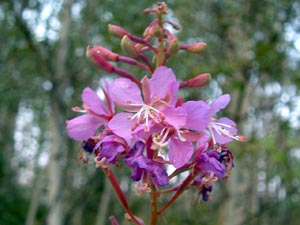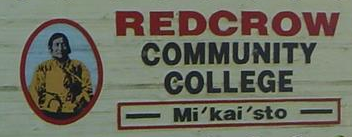Fireweed – Chamerion angustifolium ssp. angustifolium (Willow Herb)

Sommer, Kendra and Shelby.
There is a story told about Fireweed. Once, a young Indian maiden’s boyfriend was captured by enemies, so she set fire to the far end of an enemy’s camp to distract them. The enemies went running to the fire and she untied her lover and they ran away. The enemies saw them escape so they left the fire and started chasing them. The Great Spirit took pity on her. Where ever her moccasins touched the ground, big bright flames shot up. Soon the enemies gave up and stopped chasing them. They couldn’t get even close to the girl and her boyfriend! Eventually, the flames turned into brilliant Fireweed flowers.
Kendra’s re-telling of this story:
“I remember the story you told me about Fireweed. One day, a young girl set fire to the far end of an enemy’s camp to cause a diversion to rescue her boyfriend from torture. She untied him and fled. The enemy soon chased her. The Great Spirit took pity on her. Wherever her moccasins touched the ground, great flames came up. This stopped her enemies. Eventually where the flames shot up, flowers grew. That is how we got fireweed.”
Fireweed

Chamerion angustifolium ssp. angustifolium
Galileo Educational Network
The Fireweed plant has a long stem and is usually between 90-180 cm tall. It has pinkish purple flowers that bloom in July and August, with long, skinny leaves that run along the stem. They are seen often where land has been disturbed or burned. When that happens, their role is to protect the soil from blowing away or being carried away by rain, and to give food and shelter until the bushes and trees can grow back. On the prairie, they grow on scrubby patches.
The fresh roots of the fireweed can be eaten and this plant contains lots of vitamin C and beta-carotene. A tea made of the roots and inside parts of the stem can be given to babies and adults to help with constipation. If the inner stem is dried and powdered, you can rub it on your hands and face in the winter to protect the skin from the cold. Our elders rubbed the flowers on rawhide thongs and mittens to make them waterproof.
Épilobe à feuilles étroites

Chamerion angustifolium ssp. angustifolium
Galileo Educational Network
La tige de l’épilobe à feuilles étroites est longue, mesurant généralement entre 90 et 180 centimètres. Cette plante donne des fleurs d’un rose pourpre en juillet en en août. Ses feuilles longues et étroites parcourent toute sa tige. Cette plante pousse souvent là où la terre a été dérangée ou là où il y a eu des incendies. Son rôle est de protéger le sol pour qu’il ne s’envole pas ou qu’il ne soit pas emporté par la pluie. L’épilobe nourrit et abrite la terre jusqu’à ce que les arbustes et les arbres puissent repousser. Dans les prairies, l’épilobe pousse dans les arbustaies.
Les racines fraîches de l’épilobe à feuilles étroites peuvent être mangées. Cette plante contient beaucoup de vitamine C et de béta-carotène. Du thé fait à partir des racines de l’épilobe et des parties intérieures de la tige peut être donné aux bébés et aux adultes afin de soulager la constipation. Quand nous faisons sécher l’intérieur de la tige et en faisons une poudre, nous pouvons la frotter sur nos mains et notre visage l’hiver afin de protéger notre peau contre le froid. Nos aînés frottaient les fleurs sur les chaussures et les mitaines en peau d’animal afin de les rendre à l’épreuve de l’eau.

Chamerion angustifolium ssp. angustifolium
Galileo Educational Network
- Brown, Annora. (1954). Old Man’s Garden. Vancouver, British Columbia: Evergreen Press Limited.
- Hellson, John C. (1974). Ethnobotany of the Blackfoot Indians. Ottawa: National Museums of Canada.
- Moerman, Daniel E. (1998). Native American Ethnobotany. Portland: Timber Press.
- Tilford, Gregory. (1997). Edible and Medicinal Plants Of The West. Missoula, Montana: Mountain Press Publishing Company.
- Vance, F.R., Jowsley, J.R. & Mclean, J.S. (1984). Wildflowers Across The Prairies. Saskatoon, Saskatchewan: Western Producer Prairie Books.
- Willard, Terry. (1992). Edible and Medicinal Plants of the Rocky Mountains and Neighboring Territories. Calgary, Alberta: Wildrose College of Natural Healing.





